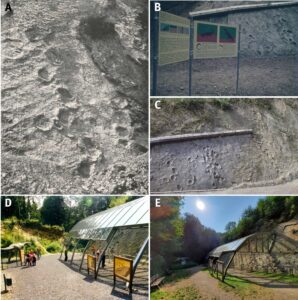Across the Ediacaran to Cambrian transition, some 541 Ma, the Earth’s biosphere changed from one dominated by microbial organisms to one where multicellular organisms, including animals, rose to importance. Within a few tens of millions of years into the Cambrian Period an array of animal groups appeared, some extinct and others ancestral to modern groups, […]
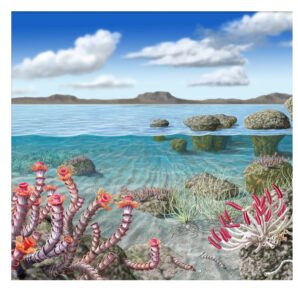
Some exceptional paleontological trilobite sites located in the Sierra Norte de Sevilla UNESCO Global Geopark are presented herein, together with an analysis of their geotourism / geotrail potential and a proposal for geoconservation. The sites are of Marianian age, a regional stage and age of the Cambrian Mediterranean Subprovince which was defined within the territory […]
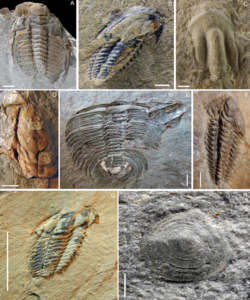
The Digne-les-Bains ammonite slab is one of the most impressive geosites of the UNESCO Global Geopark of Haute-Provence and Réserve Naturelle Nationale Géologique de Haute-Provence. Its importance rests on the number of fossils as well as their size and the high quality of the outcrop and its huge potential. It is an important subject for […]
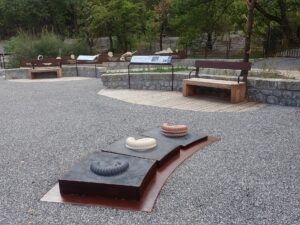
The Lower Jurassic Posidonia Shale of Southern Germany is famous for its excellently preserved fossils. First of all, the large and spectacular ichthyosaurs, pterosaurs and crocodiles impress. Fish, crinoids, ammonites and belemnites are witnesses of a very special living world in the former Posidonia Shale Sea. The rather small and inconspicuous bivalves, brachiopods and serpulids […]
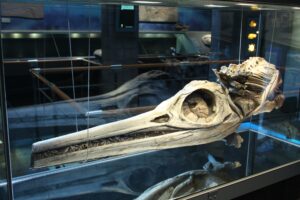
The Nusplingen Plattenkalk is a Solnhofen-type fossil Konservat-Lagerstaette in the southwestern part of the Swabian Alb, which is scientifically exploited by the Stuttgart Natural History Museum. The Nusplingen Plattenkalk formed in a deep lagoon surrounded by islands. The highly diverse and exceptionally preserved fossil fauna and flora allow a reconstruction of the Late Jurassic marine […]
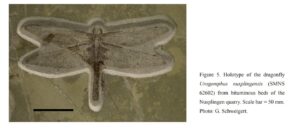
The Global Boundary Stratotype Section and Point (GSSP) of the Aalenian Stage (base of the Middle Jurassic), was established in Fuentelsaz (Central Spain) by the International Commission on Stratigraphy (ICS) of the International Union of Geological Sciences (IUGS) in 2000. This stratotype is one of the most important geosites of the Molina-Alto Tajo UNESCO Global […]
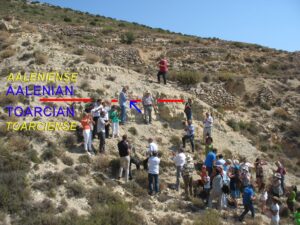
The Early Paleozoic oceans were generally characterized by short trophic chains and simple ecological tiering dominated by suspension-feeding organisms. However, the Great Ordovician Biodiversification Event (GOBE) was responsible for the complexification of food webs, increasing depth and diversity of substrate ecospace utilization and increasing benthic competition for resources near the water-substrate interface. Daedalus is an […]
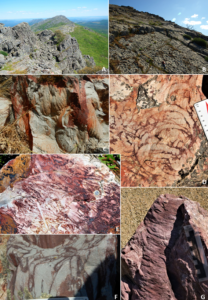
Located in France on the eastern edge of the Massif Central, the Parc naturel regional des Monts d’Ardèche, inscribed as a UNESCO Global Geopark in 2014, presents great geological diversity. This includes a sedimentary boundary between the Jurassic and Cretaceous, represented by limestone and marl. Fossils of crocodilians have been discovered in these layers, highlighting […]
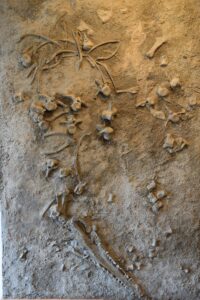
Middle Ordovician successions occur at Naturtejo UNESCO Global Geopark in five Variscan-folded, kilometer- to tens of kilometer-long structures. Four of them revealed to be fossiliferous in the different recognized lithostratigraphic units, middle-to-uppermost Darriwilian in age, with particular emphasis for Brejo Fundeiro (Oretanian regional chronostratigraphic stage) and Fonte da Horta (Dobrotivian regional stage) formations. Recent paleontological […]
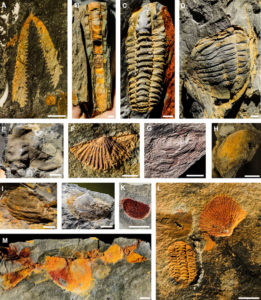
The low level of the Jurassic sea in the area of Bad Essen-Barkhausen (Wiehen Mountains, NW Germany) was a precondition for the migration of a herd of sauropods and theropods through this coastal area about 153 million years ago. The dinosaurs left at least 11 trackways on a single fine-grained siltstone layer and several more […]
